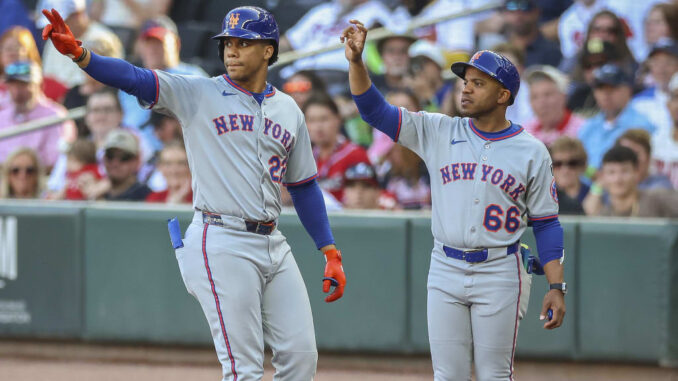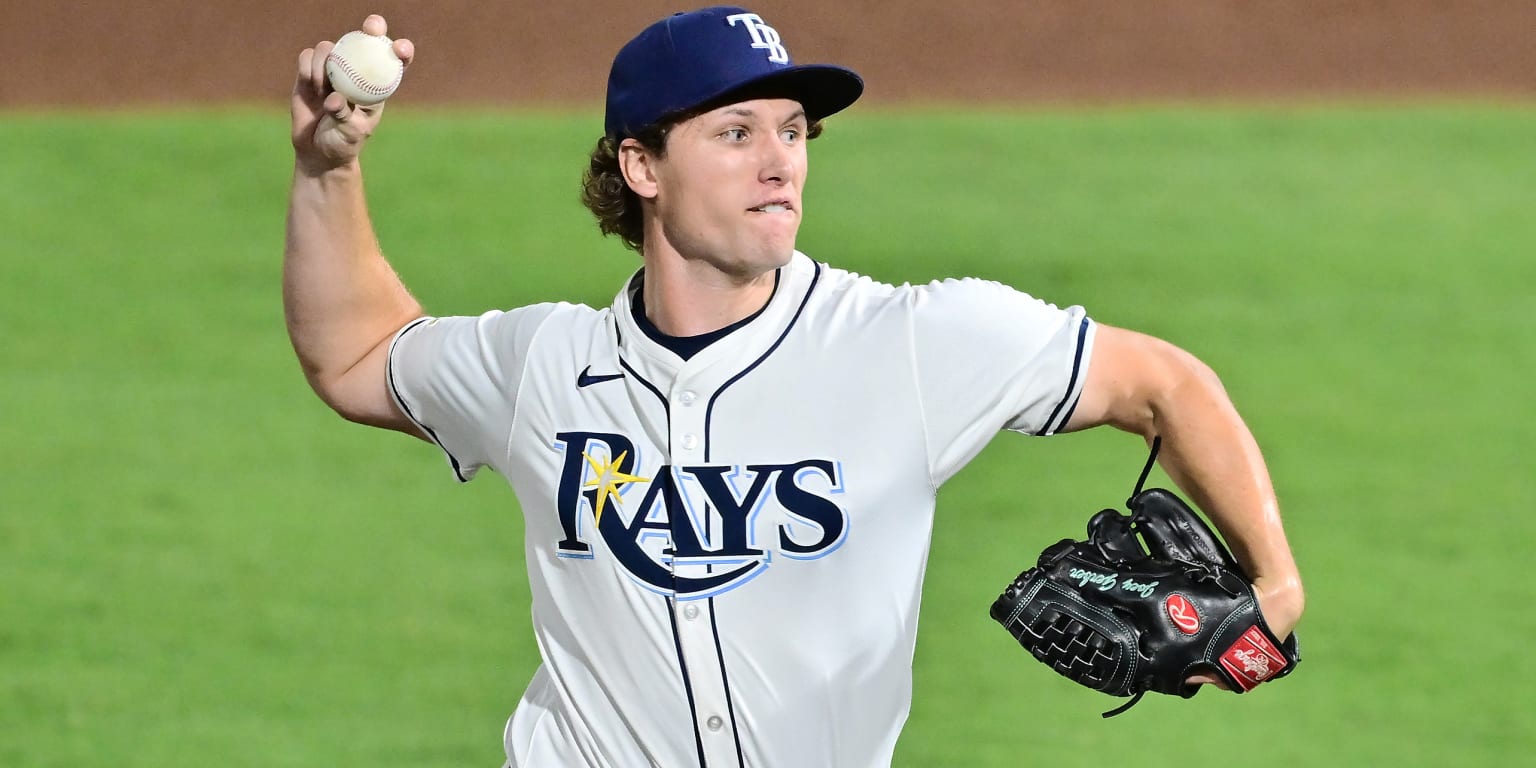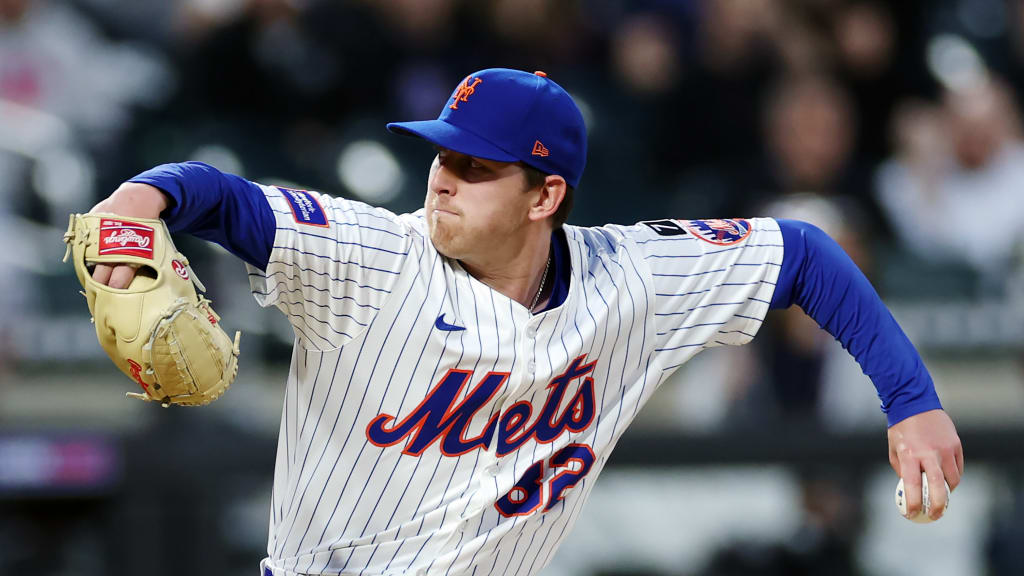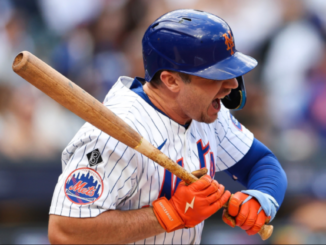
The New York Mets continued shaping their roster for the upcoming season by making two notable pitching moves on Tuesday, one of which involved a transaction with the Tampa Bay Rays. The front office, looking to strengthen both depth and competition within the pitching staff, added a right-handed reliever through a minor trade and simultaneously brought back a familiar face on a major-league contract. These decisions reflect the organization’s goal of reinforcing both ends of the bullpen while maintaining flexibility with players who still have upside or minor-league options available.
The first move involved the acquisition of right-hander Joey Gerber from the Rays. Tampa Bay had designated Gerber for assignment just one day earlier, a procedural move that placed him on waivers and signaled that the Rays no longer had space for him on their own 40-man roster. The Mets took advantage of this opportunity by trading for Gerber rather than risking another club claiming him. The front office evidently sees potential in Gerber’s arm and believes that a fresh environment could allow him to regain his footing at the major-league level.

The second move of the day featured the Mets signing left-hander Brandon Waddell to a major-league contract, bringing him back into the organization after he contributed innings for them last season.
Read More: Mets Officially Share Juan Soto Honor After Disappointing Season
By signing Waddell to a big-league deal, the team ensured that both new additions immediately join the Mets’ 40-man roster, making them eligible to compete for spots on the Opening Day pitching staff. Their inclusion on the roster also means that if the Mets eventually want to send either pitcher to the minors, they would have to pass through waivers.
Gerber’s recent major-league history has been limited. His two appearances this year with the Rays marked his first time pitching in the majors since the pandemic-shortened 2020 season, when he debuted with the Seattle Mariners.
Although his return to the big leagues was brief, the Mets believe there is more to unlock. Gerber throws a lively fastball and has shown he can generate swings-and-misses at the minor-league level, which is a skill set teams always covet in middle relievers.

During the 2025 season, Gerber spent the majority of his time pitching for Triple-A Durham, Tampa Bay’s top minor-league affiliate. Over 34 appearances, he recorded a 6.23 ERA, which on the surface looks discouraging. However, ERA does not always fully represent a pitcher’s performance in the minors, especially when dealing with small-sample fluctuations or hitter-friendly ballparks. What stands out much more is Gerber’s strikeout production: he punched out 54 batters across 43⅔ innings, an impressive strikeout-per-nine rate that suggests that his stuff—including movement and velocity—still plays well.
Read More: Mets officially table $65M for NL East rival, 3-time All-Star, 2-time Silver Slugger
Gerber’s journey prior to joining Tampa Bay also included time with the New York Yankees organization. He spent 2024 with the Yankees as a non-roster invitee during spring training, meaning he was allowed to participate in big-league camp despite not being on the roster. That season, he climbed as high as Triple-A within the Yankees’ system, showing enough progress that another team—Tampa Bay—was willing to take a chance on him heading into 2025.
Now, at 28 years old, Gerber will enter spring training with the Mets with a realistic chance to demonstrate that he belongs in a competitive bullpen picture. New York values arms that miss bats, and he fits that profile. The upcoming spring camp may be his best opportunity in years to establish a consistent major-league role.

On the other side of the ledger, Brandon Waddell represents a different kind of addition: not a new face, but a pitcher who already knows the culture and expectations of the Mets’ clubhouse. Waddell, now 31, appeared in 11 games for the Mets last season, including one start. During those outings, he produced a 3.45 ERA over 31⅓ innings. He allowed 12 earned runs and struck out 22 hitters during that stretch. While not overwhelming numbers, his ERA showed that he was capable of providing solid, steady innings—particularly in a role that may shift between long relief and spot starts.
Read More: Phillies go all in, land $6M Orioles catcher, ending JT Realmuto talks
Waddell spent most of the year developing at Triple-A Syracuse, New York’s highest affiliate. There, his numbers were not as strong—he posted a 5.02 ERA—but his workload was instrumentally different. In Syracuse, the Mets used him as a starter, giving him 15 starts in his 19 total appearances. That level of versatility makes Waddell especially valuable, because pitchers who can serve multiple roles—long reliever, spot starter, emergency fill-in—allow a team to navigate the inevitable injuries and doubleheaders that arise during a 162-game regular season.
Both Gerber and Waddell enter the offseason and upcoming spring training as depth pieces with upside. Gerber brings power and strikeout ability from the right side, while Waddell provides left-handed insurance, experience, and flexibility.
The Mets also made additional decisions involving other pitchers—not through new signings or trades, but through option decisions that directly impact next year’s roster construction. These choices are common at the beginning of the offseason, as teams evaluate which players fit into their long-term plans.
First, the Mets declined their club option on Drew Smith for the 2026 season. Smith has been with the organization for several years and has contributed meaningful innings out of the bullpen at various points. However, declining his club option means the Mets chose not to pick up the final year of his contract under the pre-set terms, and he will now become a free agent. Smith’s departure frees up roster space and payroll flexibility, giving the Mets room to pursue other bullpen options or to continue evaluating internal arms who may be ready for bigger roles.

Conversely, the Mets decided to exercise their club option on left-hander Brooks Raley. Picking up the option keeps Raley in New York for another year, a move that makes strategic sense because reliable left-handed relievers are always in demand and difficult to replace. Raley has served as a dependable bullpen arm who can handle tough matchups late in games.
Read More: Seattle Mariners official roster addition land Bay Rays’ top Ace to shape their 2026 team identity
Along with that decision, two pitchers who held player options—veteran relievers A.J. Minter and Frankie Montas—chose to opt in for next season. A player option allows the player to choose whether to remain under their current contract or test free agency. By opting in, both pitchers decided to stay with the Mets under the existing terms of their deals, meaning the team retains multiple experienced contributors without needing to negotiate new contracts.
All together, these moves demonstrate a balanced approach: adding potential upside (Gerber), retaining dependable depth (Waddell), keeping proven performers (Raley, Minter, Montas), and making strategic separations (Smith). The Mets are attempting to shape a pitching staff that blends experience with new competition, setting up a deeper and more flexible roster heading into the next season.



Be the first to comment